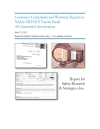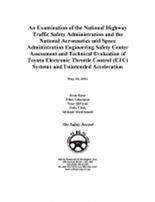Last month, we reported a Florida circuit judge’s extraordinary decision to set aside a civil jury verdict in favor of Ford Motor Company, based on evidence and testimony that Ford had concealed an electronic cause of unintended acceleration from the National Highway Traffic Safety Administration – and its own expert witnesses. Judge William T. Swigert’s 51-page decision in Stimpson v Ford also outlines how decades of the automaker’s dissembling to limit its liability in civil lawsuits helped to mire the thinking about root causes of unintended acceleration in the limited context of mechanical agency, even as the electronic sophistication – and the potential for defects and unanticipated interactions between systems – in vehicles grew.
That a large corporation would conceal a deadly problem to protect its interests is hardly news – although the systemic and exacting strategies Ford employed in this case are notable. What makes this story important is how Ford also re-wrote the history on this issue and helped to shape the agency’s thinking about an ongoing problem for decades hence. We have only the public record regarding Toyota UA at our disposal – and precious little of that has actually been made public – so we can’t know how Toyota has assessed its own UA problem; if and what parallels in corporate misdirection might be drawn between Ford and Toyota. But one can see how Ford’s actions back in the 1980s still resonate with the agency today and how it has kept NHTSA from advancing its knowledge in electronic causes of UA that are not already detected by the vehicle diagnostics.
The Emergence of a Defect in the Age of Audi SUA
As recounted in the Judge Swigert’s order, the history of Ford and unintended acceleration goes back to 1973, when Ford’s cruise control was under development. Ford Engineer William Follmer “warned about the risk posed by electromagnetic interference, and cautioned that ‘to avoid disaster’ it was imperative to incorporate failsafe protection against EMI in the system’s design.” In 1976, two Ford engineers obtained a patent describing a design for the cruise control system’s printed circuit board to reduce the risk of a sudden acceleration posed by EMI. Continue reading

